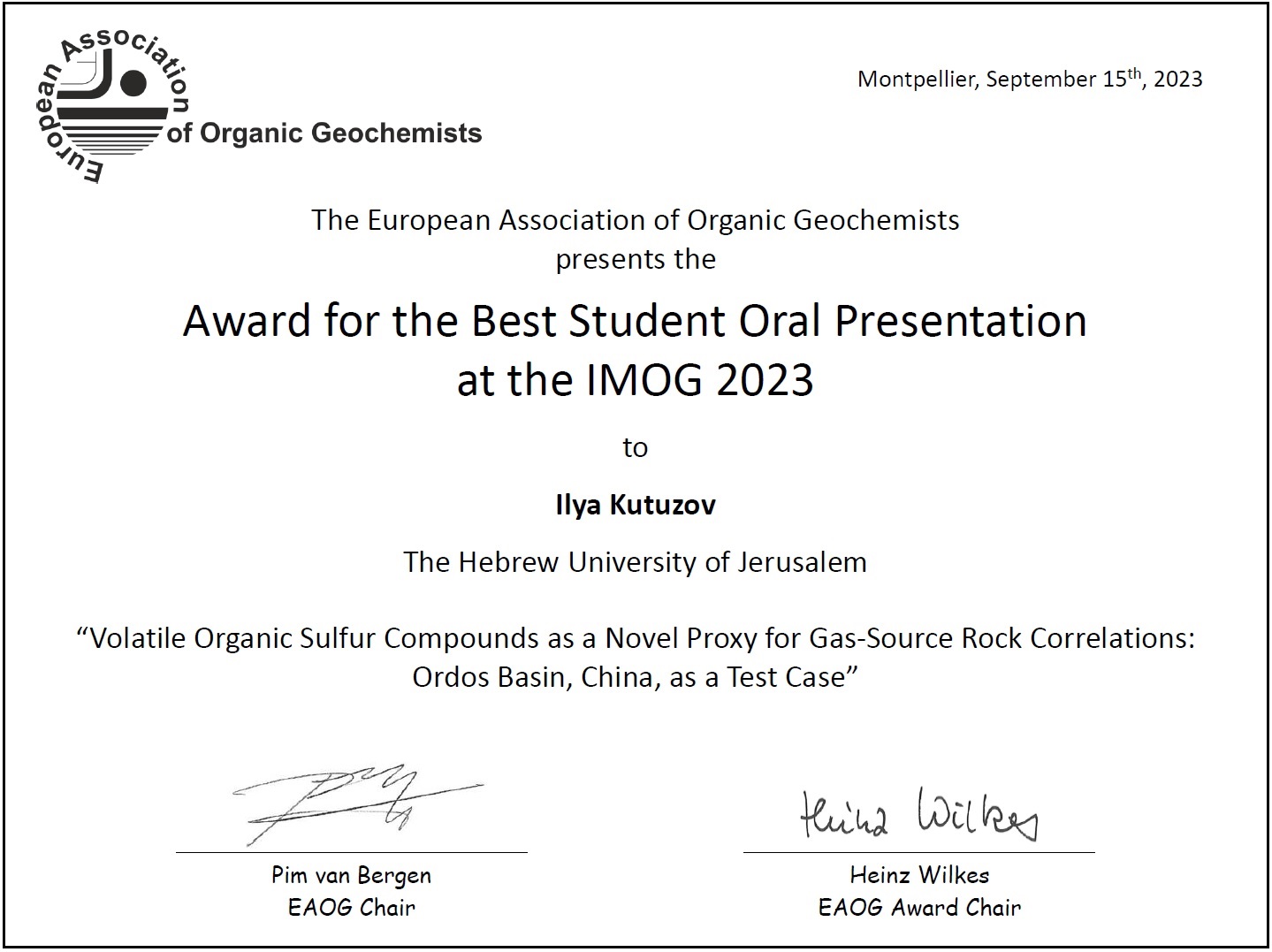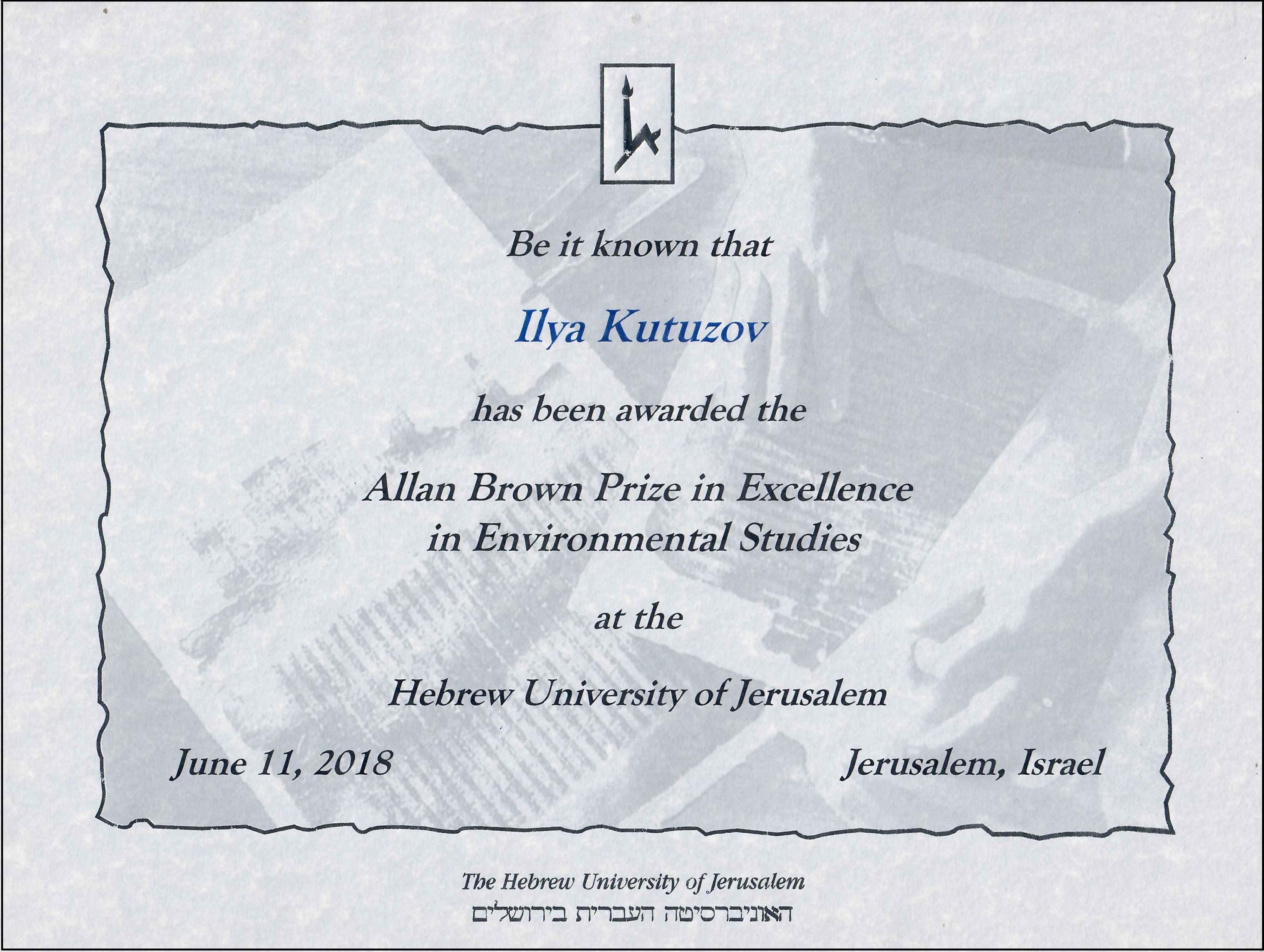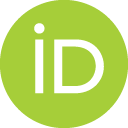Ilya Kutuzov

Organic Geochemist and Earth Scientist

About
I am a multidisciplinary Earth scientist and geochemist with passion for combining experimental laboratory work with field work. My current research focuses on the formation of volatile organic sulfur compounds (VOSC) by abiotic synthesis. Identfiyng abiotic formation mechanisms of VOSC may provide insights for the emergence of life on Earth as some VOSC were demonstrated to aid the formation of peptide bonds. Alongside my research, I teach geology courses at the Open University of Israel.
I am currently looking for a job or a post-doc. Got an offer? reach out via email
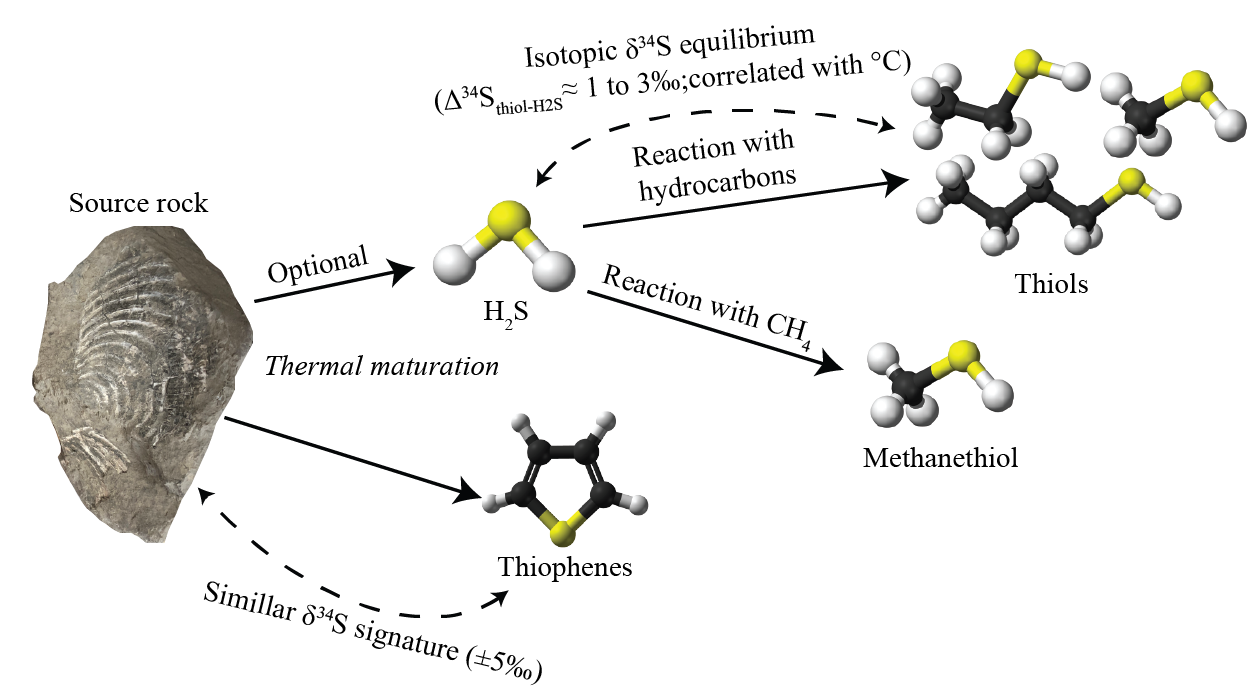
Research interests
- Abiotic synthesis of organic sulfur compounds and their role in the emergence of life on Earth.
- Evolution of biomarkers in organic matter from the Paleozoic Era with emphasis on anoxic environments.
- The sulfur and carbon cycles in the subsurface from processes during diagenesis of organic matter up to formation of sulfur-compounds during catagenesis and cracking of fossilized organic matter.
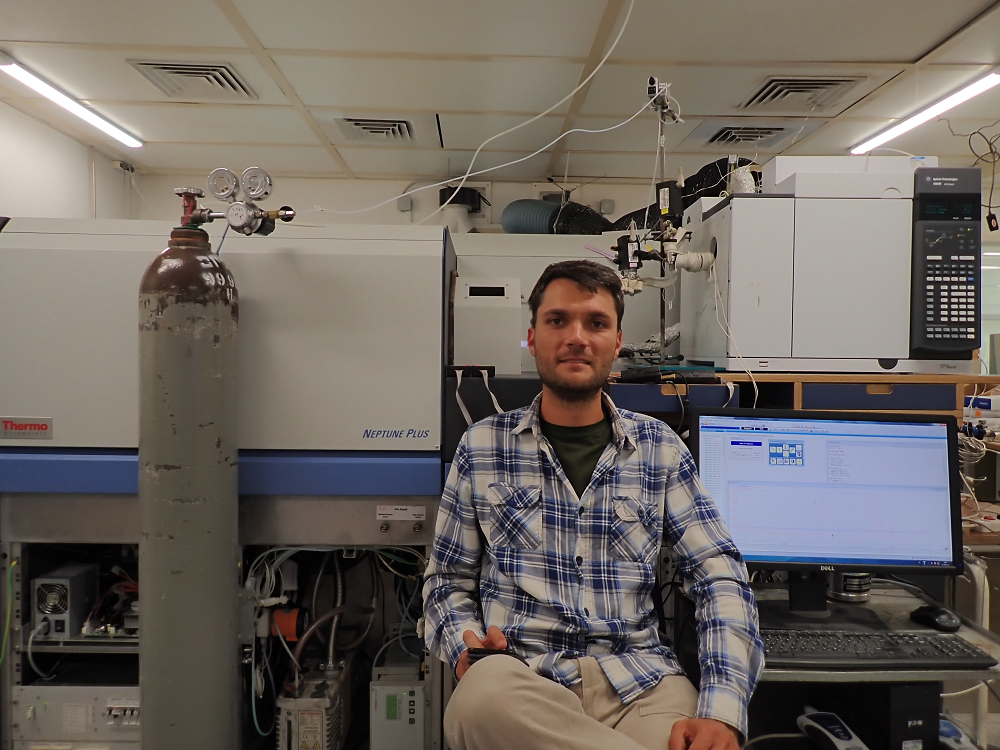
Publications
- B. Langford, A. Vaks, I. Kutuzov, J. Keinan, T. Golan, T. Zilberman, G. Yasur, N. Morag, Y. Ebert, O. Gaster, R. Ben-Yair, M. Ullman, A. Frumkin; From hypogenic to biogenic speleogenesis in semi-arid climate: Bat guano-driven carbonate weathering and cave modification in Chariton Cave, Israel. Geomorphology, 483, 109815, 2025. DOI
- C. Cai, I. Kutuzov, W. Mei, D. Wang, B. Luo, S. Huang, B. He, A. Amrani; Chemical, carbon and sulfur isotopic compositions constrain the origin of Upper Carboniferous-Lower Triassic gases in eastern Sichuan Basin, SW China. Science China Earth Sciences, 67, 3169-3185, 2024. DOI
- D. Wang, I. Kutuzov, H. Zhang, Z. Cao, Q. Wang, A. Amrani, C. Cai; Application of sulfur isotopes of volatile organic sulfur compounds to determine the natural gas secondary alterations and possible sources in the Tarim Basin, NW China. Marine and Petroleum Geology, 169, 107078, 2024. DOI
- I. Kutuzov, Q. Xiao, A. Amrani; Gas-phase reaction of CH4 and H2S – Evidence from pyrolysis experiments and case study from the Sichuan Basin. Organic Geochemistry, 194, 104826, 2024. DOI
- M. Rubin-Blum, Y. Yudkovsky, S. Marmen, O. Raveh, A. Amrani, I. Kutuzov, T. Guy-Haim, E. Rahav; Tar patties are hotspots of hydrocarbon turnover and nitrogen fixation during a nearshore pollution event in the oligotrophic southeastern Mediterranean Sea. Marine Pollution Bulletin, 197, 115747, 2023. DOI
- I. Kutuzov, Q. Xiao, C. Cai, A. Amrani; Formation of volatile organic sulfur compounds by low thermal maturation of source rocks: A geochemical proxy for natural gas. Marine and Petroleum Geology, 158, 106531, 2023. DOI
- I. Kutuzov, D. Wang, C. Cai, A. Amrani; Tracking the origin of Ordovician natural gas in the Ordos Basin using volatile sulfur compounds. Marine and Petroleum Geology, 157, 106488, 2023. DOI
- Q. Xiao, I. Kutuzov, W. Said-Ahmad, Y. Duan, S. Cai, A. Amrani; Effect of thermal maturation on the isotopic compositions of volatile organic sulfur compounds released from a kerogen by hydrous and anhydrous pyrolysis. Journal of Analytical and Applied Pyrolysis, 171, 105971, 2023. DOI
- I. Kutuzov, W. Said-Ahmad, C. Turich, C. Jiang, N. Luu, T. Jacksier, A. Amrani; The molecular and sulfur isotope distribution of volatile compounds in natural gases and condensates from Alberta, Canada. Organic Geochemistry, 151, 104129, 2021. DOI
- I. Kutuzov, Y.O. Rosenberg, A. Bishop, A. Amrani; The origin of organic sulphur compounds and their impact on the paleoenvironmental record. In: Wilkes H. (eds) Hydrocarbons, Oils and Lipids: Diversity, Origin, Chemistry and Fate. Handbook of Hydrocarbon and Lipid Microbiology. Springer. 2019. DOI
- Y.O. Rosenberg, I. Kutuzov, A. Amrani; Sulfurization as a preservation mechanisem for the δ13C of biomarkers. Organic Geochemistry, 125, 66-69, 2018. DOI
- C. Gruber, I. Kutuzov, J. Ganor; The combined effect of temperature and pH on albite dissolution rate under far-from-equilibrium conditions. Geochimica et Cosmochimica Acta, 186, 154-167, 2016. DOI
When not in the lab
I volunteer at the Mineralogy and Petrology collection at the National Natural History Collections (NNHC) and take part in various cave surveys (for example in the Levana Cave) as a member of the Israeli Cave Research Center (ICRC)
Achievments and things I am proud of
Identification of a pollutant on the Israeli coast (“Tar pollution”)
In February 2022, amidst the covid pandemic, the Israeli coastline was covered by vast quantities of tar-like pollutant. Rapid sampling and subsequent molecular and biomerker analysis allowed me to conclude, within days of the pollution event, the pollutant is most likely a crude oil rather than tar- therefore implying a different strategy for source-identification and treatment.
My findings were submitted to the Israeli Ministry of Environment (and later to the press), yet were originally ignored. Following a year, the Israeli Ministry of Environment published the result of their analysis and acknowledged the pollutant is indeed a crude oil.
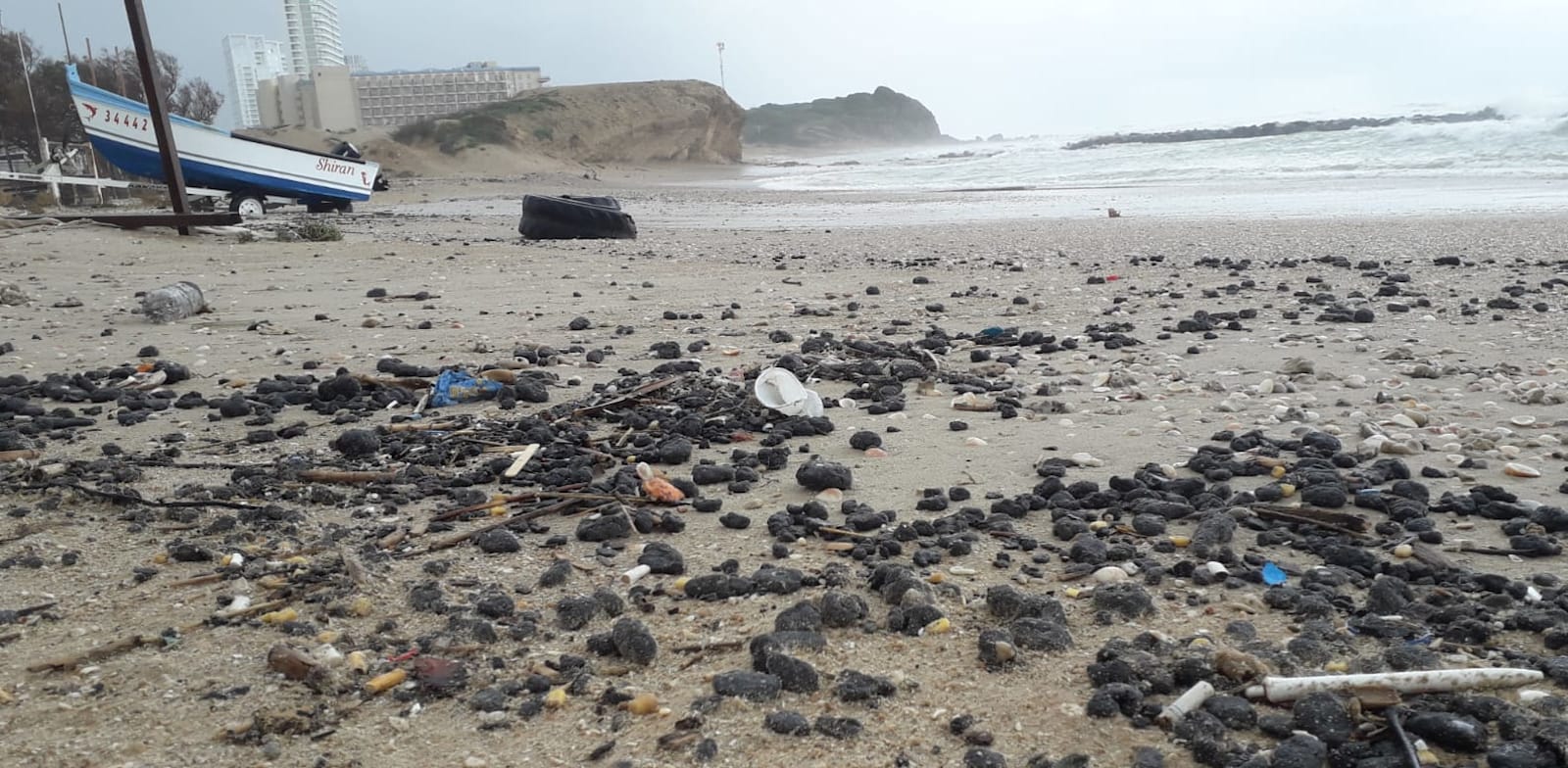 Photo from Calcalist
Photo from Calcalist
Protecting the Ayalon cave
In late 2021 I was invited to speak at the Israeli Planning Administration (IPA) as part of a scientific panel focused on the importance of the Ayalon cave. My presentation highlighted the risks faced by the local aquifer due to introduction of organic-contaminants, heavy metals and subsequent change of the aquifer redox state- all of which were expected to occur due to proposed construction of a railroad line and introduction of runoff directly into the groundwater. The joint scientific effort led to changes in the original construction plan and the formation of a long-term monitoring project at the cave and surrounding aquifer. Detailed story of this conservation campaign was publised in Integrative Conservation.
 Photo by Boaz Langford
Photo by Boaz Langford
Study of an oil spill in arid condition
I was a part of a group that studied the chemistry of oil spilled at the Evrona Nature Reserve. The groups’s joint effort led to identification of previously unknown pollution event at the area and helped understand the mechanisms of oil degredation in the desert soil under arid conditions. The findings of this multi-year project were published in Nimrod Arvatz’s Msc work.

Honors and awards
